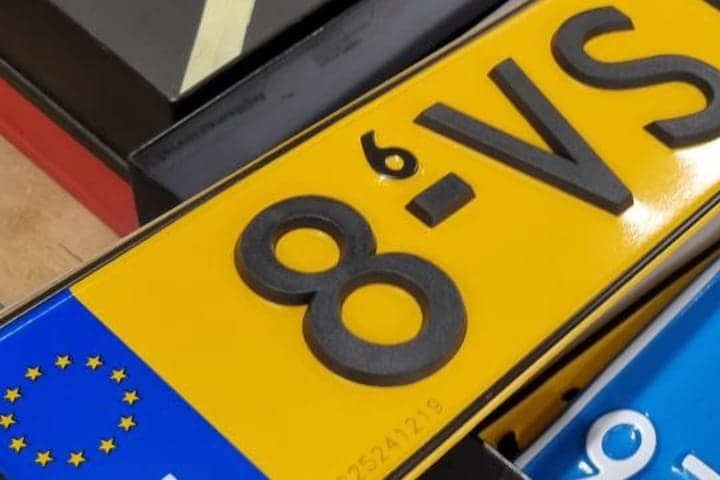Case-by-case assessment

Duplicate codes on license plates are a thorn in the side of many car enthusiasts, but usually you can’t do anything about it. Sometimes, however, you can, because there are indeed legal ways to get rid of that extra digit above the first dash.
The duplicate code is that extra, small digit above the first dash on a Dutch license plate. The digit is not part of the license plate itself, but indicates that the license plate has been replaced once. If it is not possible to hand in the old plates due to theft, loss or damage, the duplicate code appears on the license plate. So swapping license plates is possible without a duplicate code, but controlled intake of the old plate is a condition for this.
The name of the current license plates actually says it all, because GAIK stands for Controlled Issue and Intake of License Plates. The duplicate code should prevent two cars from driving around with the same license plate, because from the issue of plates with such a code, the original set is no longer valid. In the event of theft of plates, the code is extra important, because you can use it to show that it was not your car and license plate in the photo when you receive fines. For that reason, wiping away the paint on the digit is also more illegal than you would expect based on the simplicity of that act.
On request
Anyone who has such a duplicate code, usually a one, will not get rid of it. At least: in principle. It appears that there are indeed possibilities to have the digit hated by many removed, but you must have a good reason for this. An obvious reason is that the owner of the car still appears to be in possession of both original license plates. Another good reason may be that the car in question has never had GAIK plates at all, which would normally mean a duplicate code if the car is still registered.
Anyone who thinks for another reason that it would not hurt to lower the duplicate code can submit a request via the RDW website. There is no standard set of conditions in that case, or at least it is not made public. The RDW assesses the applications on a case-by-case basis and the exact conditions are, according to the Government Service, ‘dependent on the reason for the increase and the situation of the customer’.
Re-import
Until recently, the re-import of a car that had previously had a Dutch license plate was also a reason for a (increase of the) duplicate code. Partly due to the efforts of this man, this is no longer the case, and since January 31, the RDW even automatically checks whether a car that is re-imported may pass for its Dutch license plate without increasing the duplicate code.